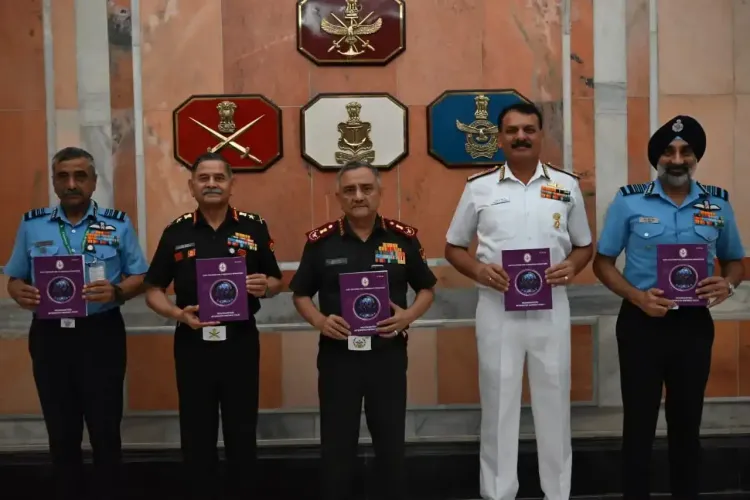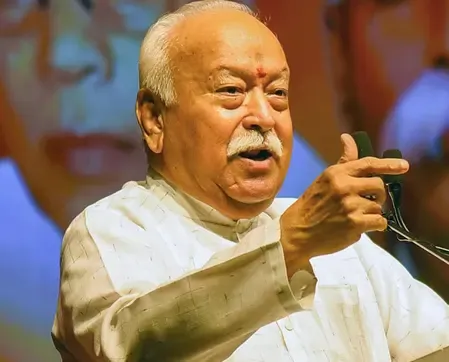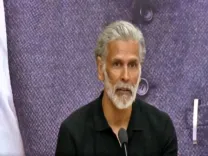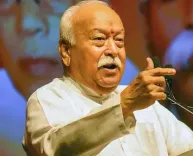What New Doctrines for Cyber and Amphibious Operations Did CDS Chauhan Release?

Synopsis
Key Takeaways
- Declassified doctrines enhance military strategy.
- Focus on joint operations across services.
- Agnishodh integrates research with military needs.
- Operation Sindoor marks a shift in counter-terrorism.
- Preparation for fifth-generation warfare is emphasized.
New Delhi, Aug 7 (NationPress) Chief of Defence Staff (CDS) General Anil Chauhan unveiled the declassified versions of the Joint Doctrines for Cyberspace Operations and Amphibious Operations on Thursday, marking a significant step in enhancing the nation’s commitment to improve visibility, accessibility, and the widespread dissemination of joint military concepts.
During the Chiefs of Staff Committee meeting, General Chauhan noted that these doctrines will equip stakeholders and policy makers with a unified vocabulary and systematic guidelines, essential for effective planning and seamless implementation of joint military endeavors.
The Joint Doctrine for Cyberspace Operations presents a cohesive strategy to safeguard national cyberspace interests, merging both offensive and defensive cyber capabilities, thus facilitating synchronized operations among the three Services.
This doctrine also emphasizes threat-informed planning, resilience enhancement, real-time intelligence integration, and the development of joint cyber capabilities.
Conversely, the Joint Doctrine for Amphibious Operations outlines a structured approach for the planning and execution of amphibious operations, integrating maritime, air, and land forces. It prioritizes interoperability, rapid response capabilities, and the application of joint forces to affect operations on land.
General Chauhan has initiated the creation of various new doctrines and primers addressing both contemporary and specialized areas of warfare, including Military Space Operations, Special Forces Operations, Airborne/Heliborne Operations, Integrated Logistics, and Multi-Domain Operations.
Just this week, the Indian Army collaborated with the Indian Institute of Technology (IIT) Madras to launch ‘Agnishodh’, the Indian Army Research Cell (IARC) located on the IIT Madras campus.
This research center was officially inaugurated by General Upendra Dwivedi, Chief of the Army Staff (COAS), during his two-day visit to Chennai.
The initiative is part of the Indian Army’s expansive transformation framework, guided by the Five Pillars of Transformation outlined by the COAS. Agnishodh specifically enhances one of these pillars, Modernisation and Technology Infusion, demonstrating the Indian Army’s commitment to merge academic research with real-time operational applications.
In a presentation at IIT Madras centered around “Operation Sindoor – A New Chapter in India’s Fight Against Terrorism,” General Upendra Dwivedi characterized the operation as a pivotal, intelligence-led response that reshaped India’s counter-terrorism strategy.
He highlighted that the 88-hour operation was remarkable in its scale, reach, depth, and strategic ramifications, executed across the DIME spectrum.
As warfare evolves, he emphasized that the Indian Armed Forces are ready for fifth-generation conflicts characterized by non-contact warfare, strategic tempo, and psychological dominance.
Reiterating the Indian Army’s dedication to self-reliance under “Swadeshikaran Se Sashaktikaran,” he detailed key collaborations under national technology missions, including INDIAai, Chip-to-Startup, and Project QuILA, with MCTE Mhow acting as a strategic partner.









